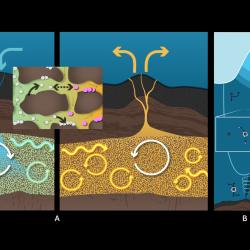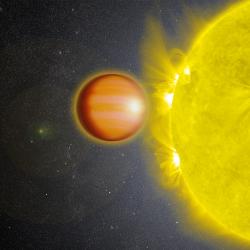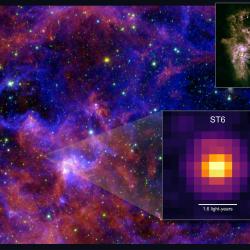UMD Astronomer Prepares for Upcoming NASA Mission to Investigate Mysterious Moon Domes
With NASA’s selection of a partner to deliver the Lunar VISE mission payload to the moon’s Gruithuisen Domes, scientists take another step toward understanding lunar formation and evolution.

NASA recently announced that Firefly Aerospace will deliver the Lunar Vulkan Imaging and Spectroscopy Explorer (Lunar-VISE) payload to the Gruithuisen Domes, one of the most enigmatic locations on the moon. Led by the University of Central Florida (UCF) and supported by partners including the University of Maryland, the Lunar-VISE project aims to investigate the Domes’ inexplicable origins—and whether the moon’s surface contains potential resources for future lunar exploration.
As a co-investigator and instrument scientist of the project, UMD Professor of Astronomy and Geology Jessica Sunshine sees the announcement as a major milestone in the effort to learn more about the moon’s volcanic history and evolution over time.
“We are beginning to have actual hardware and are building our instruments, and now we know how we will get them deployed on the lunar surface and what our rover will look like,” Sunshine said. “What started as a concept and then figures in a proposal is now amazingly really happening. While the project has a lot of work to do, particularly as we integrate with Firefly, this marks a new exciting phase that gets us tantalizingly close to going from paper to the moon.”
The Lunar-VISE mission, currently in its development phase and slated for a 2028 launch date, will travel across the Gruithuisen Domes on the near side of the moon for 10 days. One of Lunar-VISE’s primary goals is to investigate how these silica-rich volcanic domes formed—a process that remains a mystery to scientists because of the moon’s lack of Earth-like conditions (such as oceans and plate tectonics) that can create similar features. The instruments aboard Firefly’s rover will also conduct detailed studies of the lunar surface in the area, studying ancient lava flows surrounding the landing site and other important geologic features that may help scientists reconstruct the moon’s history from formation to its current state.
Sunshine says that for much of the first half of 2025, the Lunar-VISE team will assemble, test and calibrate flight instruments for the upcoming mission—including visible and near-infrared cameras used to detect electromagnetic waves for remote sensing and imaging. The team hopes to complete the final testing of components by August 2025 to ensure they meet all operational requirements and safety standards for lunar deployment by the project’s official launch date.
“I’m very proud of our Lunar-VISE team in developing, building and testing our payload instruments and getting us ready for integration onto Firefly’s [Blue Ghost 3] lunar lander and rover,” said the project’s principal investigator Kerri Donaldson Hanna, an associate professor in UCF’s Department of Physics. “The Lunar-VISE team is excited to work with Firefly to plan our science and exploration operations at the Gruithuisen Domes in 2028.”
###
This article was adapted from text provided by the University of Central Florida.







